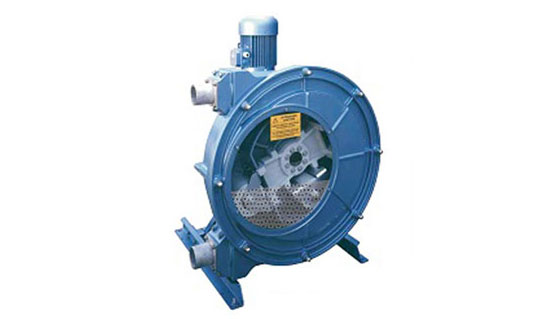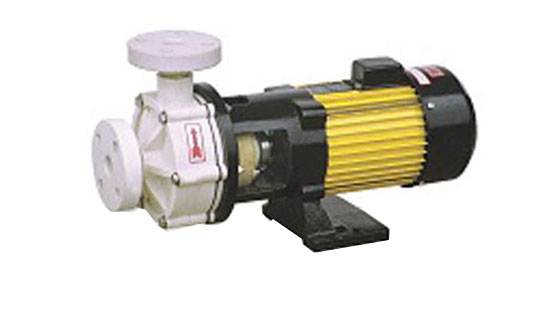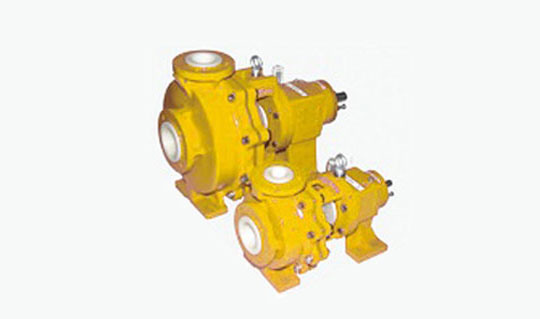AODD Pumps - Air Operated Double Diaphragm Pumps Manufacturers
Air Operated Double Diaphragm Pumps Manufacturers
Moniba Pumps is known to be one of the finest Air Operated Double Diaphragm Pumps Manufacturers in India. Our Air Operated Double Diaphragm Pumps can be used for difficult-to-pump applications in Petrochemical Plants, Oil and Gas, Pharmaceutical, Food Processing, Mining, Marine and various other applications. Air Operated Double Diaphragm Pump are easy to maintain, provide reliable performance, and eliminate downtime to give you the best performance. Moniba Pumps has been a leading AODD Pumps Manufacturer in India since a long time in the industry. We supply engineered solutions across companies that operate on the basis of Pumps.
How the Pump Works
Left stroke
The air valve directs pressurized air to the back side of diaphragm A. The compressed air is applied directly to the liquid column separated by elastomeric diaphragms. The diaphragm acts as a separation membrane between the compressed air and liquid, balancing the load and removing mechanical stress from the diaphragm. The compressed air moves the diaphragm away from the center block of the pump. The opposite diaphragm is pulled in by the shaft connected to the pressurized diaphragm. Diaphragm B is on its suction stroke; air behind the diaphragm has been forced out to the atmosphere through the exhaust port of the pump.
The movement of diaphragm B toward the center block of the pump creates a vacuum within chamber B. Atmospheric pressure forces fluid into the inlet manifold forcing the inlet valve ball off its seat. Liquid is free to move past the inlet valve ball and fill the liquid chamber (see shaded area).

Mid stroke
When the pressurised diaphragm, diaphragm A, reaches the limit of its discharge stroke, the air valve redirects pressurised air to the back side of diaphragm B. The pressurised air forces diaphragm B away from the center block while pulling diaphragm A to the center block.
Diaphragm B is now on its discharge stroke. Diaphragm B forces the inlet valve ball onto its seat due to the hydraulic forces developed in the liquid chamber and manifold of the pump. These same hydraulic forces lift the discharge valve ball off its seat, while the opposite discharge valve ball is forced onto its seat, forcing fluid to flow through the pump discharge. The movement of diaphragm A toward the center block of the pump creates a vacuum within liquid chamber A. Atmospheric pressure forces fluid into the inlet manifold of the pump. The inlet valve ball is forced off its seat allowing the fluid being pumped to fill the liquid chamber.

Right stroke
At completion of the stroke, the air valve again redirects air to the back side of diaphragm A, which starts diaphragm B on its exhaust stroke. As the pump reaches its original starting point, each diaphragm has gone through one exhaust and one discharge stroke. This constitutes one complete pumping cycle. The pump may take several cycles to completely prime depending on the conditions of the application.
Moniba Pumps, being the Air Operated Double Diaphragm Pumps Manufacturers in India, procure every step of processing in the most efficient manner and thus, we maintain our processing standards with the best in class techniques and operations that result in flawless and rust-free end products with long industrial life.
We are also a Air Operated Double Diaphragm Pumps Exporter in India in India. We manufacture superior quality of AODD Pumps, adhering to specific qualified standards of manufacturing guided by the governing bodies and export the same overseas.


Industries & Application
Among the lot of the most appreciated Air Operated Double Diaphragm Pumps Manufacturers in India in the industry, we have achieved great heights in this field. Some of the Industrial uses of pumps produced by the best AODD Pumps Manufacturer in India are as follows-
Automotive Industry:
Grinding emulsion, oil, coolant, hydraulic fluid, sulfuric, automotive primer, soluble oil, varnish disposal,
Varnish additives, degreasing baths, cutting oil, water and glycol mixture, paint
Aviation:
Aircraft fuelling and drainage, satellite refueling, solid rocket propellant, missile silos
Beverage Industry:
Yeast, diatomaceous earth slurry, hot pulp, liquid hops, sugar syrup, concentrates, Gas-liquid mixtures, wine, fruit pulp, fruit juice, corn syrup
Ceramics:
Slip, glaze, enamel slip, effluent, clay, clay slurry, lime slurry, kaolin slurry
Chemical Industry:
Acids, alkalies, solvents, suspensions, dispersions, magnesium hydroxide, varnishes, sump water, resins, Latex, adhesives, effluent sludge, stabilizers, filter press, electrolytes
Construction Industry:
Sump and pit drainage, cement slurry, ceramic tile adhesive, rock slurry, ceiling coating paints, texture spray
Cosmetics:
Lotions, creams, shampoos, emulsions, hand creams, surfactants, hair permanents, soaps
Electronics Industry:
Solvents, electroplating baths, ultrapure liquids, carrier fluids for ultrasonic washing, sulfuric, nitric and acid Wastes, etching acids, MEK, acetone, polishing compounds
Food:
Brine, chocolate, vinegar, molasses, dog food, vegetable oil, soy bean oil, honey, cat food, HCL, animal blood
Furniture Industry:
Adhesives, varnishes, dispersions, solvents, stains, Elmer’s Glue, white good glue, solvents, glue (5-6000 cps) epoxy, starch adhesives, spray packages
Mining:
Sump gallery drainage, water drainage, coal sludge and rock slurry, cement slurry, grounding mortar, oil transfer, Explosive slurry, adhesive, lube oil, foaming
Paints & Coatings:
Resins, solvents, acrylic, wood preservative stain, concrete paints, varnishes, titanium dioxide slurry, primers, Stains, dispersions, varnish cleaning baths, alkalyd resin
Pharmaceutical Industry:
Vegetables extracts, tablet pastes, ointments, alcohols, filtering aids, ultra filtration,Blood plasma, waste solvents, sump waste
Plating:
Anodic sludge, electroplating baths, varnishes, enamels, solvents, cleaning baths, filtering Pulp/Paper/Packaging: Latex, adhesives, paints, resins, printing inks, dispersions, TiO2 slurry, Kaolin clay, hydrogen peroxide
Refineries:
Tank roof drainage, oil sludge, tank cleaning, tank moat drainage, portable pumping
Road Tanker Trucks:
Loading and draining of tank by means of pump on vehicle, tank vehicle washing facilities, acid spraying, foaming
Shipbuilding:
Tank and bilge drainage, ship cleaning, stripping, oil skimming, seawater
Smelters, Foundries & Dye Casting:
Metal slurry, hydroxide and carbide slurry, dust scrubbing slurry, back wash for Flushing of cores, mold release
Textile & Carpet:
Dyeing chemical, scotch guard, starch and sizing, resins, dyes, latex
Water and Sewage Treatment:
Milk of lime, thin slurry, effluents, chemicals, charging of filter presses, polymer, waste water
Utility:
Contaminated liquids, charging of scrubbers, milk of lime, transformer oil, resins
Ceramics

The items cover in the ceramics industry include Slip and glaze, filter presses, abrasive fluids,and sanitary products
Chemical & Petrochemical

The items over in the chemical and petrochemical Industry include acids, alcohols, hydrocarbons, solvents,and organics
Coatings: PAINTS & INKS

The items cover in the coatings industry Include paints, inks, dyes, resins, and Adhesives, solvents
Food & Beverage

The items we cover in the food and beverage industry include beverages, dairy products , purees, juices, and preserves
Wastewater

The items cover in the wastewater treatment Industry includes chemical waste and general waste.
PAINTS & INK DIPENSING MACHINE

MONIBA AODD PUMPS
Advantages of Moniba Pumps
Range
| Model | Inlet air connection in inches | Inlet in inch | Outlet in inch | Max flow in LPM | Max Solid Size in MM | Material of casing |
| AIRON15 | 1/4" | 1/2 | 1/2 | 33 | 2.5 | PP,SS,PVDF,AL |
| AIRON25 | 1/4" | 1 | 1 | 60 | 3.4 | PP,SS,AL,PVDF |
| AIRON40 | 1/2" | 1.5 | 1.5 | 140 | 5.0 | PP,SS,AL |
| AIRON50 | 3/4" | 2 | 2 | 300 | 6.5 | PP,SS,AL |
| AIRON80 | 1" | 3 | 3 | 440 | 10.0 | ALUMINUM |
Specifications
This parameters depend on size of pump
| Temperature | Max 90oC |
| Solid Size | Max 10 MM |
| Solid % | Max 50% |
| Viscosity | 15000 CP |
| Self Priming | 6mtr of Water column |
Performance
Diaphragm Pump Selection
| Elastomer | Main Properties & uses | Min | Optimum | Max |
| Buna-N | Good general purpose diaphragm for use on water, most | -18F | 50 to 140F | 176F |
| hydrocarbons & mild chemicals | -28C | 10 to 60C | 80C | |
| EPDM | Good for caustic solutions & dilute acids. Poor on oils & solvents | -11F | 50 to 140F | 212F |
| PTFE | Aggressive chemicals & Solvents but with low abrasion | 32F | 50 to 212F | 356F |
| resistance | 0C | 10 to 100C | 180C | |
| Santoprene | Caustic solutions & dilute acids. Excellent abrassion resistance | -10F | 50 to 140F | 212F |
| -23C | 10 to 60C | 100C | ||
| Viton | Aggressive chemicals & most solvents. High temprature uses. | 0 F | 75 to 212F | 356F |
| -18C | 24 to 100C | 180C |
VISCOSITY
Accessories
PULSATION DAMPENERS FOR REDUCING PULSATION IN PERISTALTIC PUMPS
As fluid enters the head of a peristaltic pump, it becomes trapped between two rollers. This "pillow" of fluid is followed by a void, where the tubing is occluded by the rollers. Alternating pillows and voids cause fluid flow to be pulsated, rather than smooth and continuous Figure.
If pulsation is undesirable, using a pump head with adjustable occlusion can lessen the pulsation by a quarter. Reducing occlusion decreases the degree of pulsation because there is less distinction between fluid pillows. Some applications, however, are more sensitive to the pulsating flow produced by a peristaltic pump. These applications may require smoothing the flow by more than 25%. In these cases, four other methods may be considered for reducing pulsation further: using pump heads with offset occlusion and multiple-roller design; mounting multiple pump heads at an offset; using a pulse dampener; and changing the configuration of the discharge tubing.

A pulse dampener can be inserted into the discharge line to reduce pulsation. As the pulsating flow enters the dampener vessel, the air pocket trapped above the fluid absorbs up to 90% of the pulsation. A smoother flow leaves the vessel.
For all tubing sizes, a pulse dampener can easily be fabricated using a retaining vessel and appropriately sized fittings, The outlet of the dampener should be at the same height as, or lower than, the inlet in order to reduce dead volume. Both inlet and outlet should be located near the bottom of the vessel to trap air in the top of the vessel.
Changing the configuration of the channel through which the tubing flows can also reduce pulsation. Extending the length of the discharge tubing several times and selecting a softer tubing material, such as silicone, can reduce pulsation by as much as 60%. Softer tubing helps absorb fluid pulsation, and a longer discharge line increases friction.
The increase in friction raises back pressure, which compresses the pulses together, thereby reducing pulsation.
FLR Unit(Filter Lubricator Regulator)



























